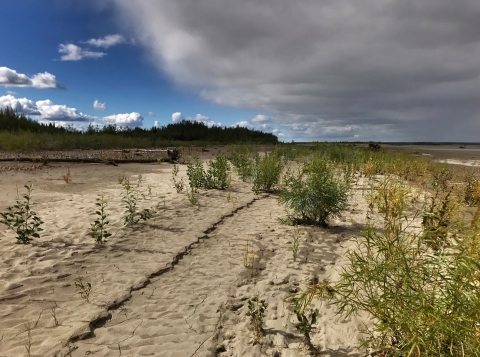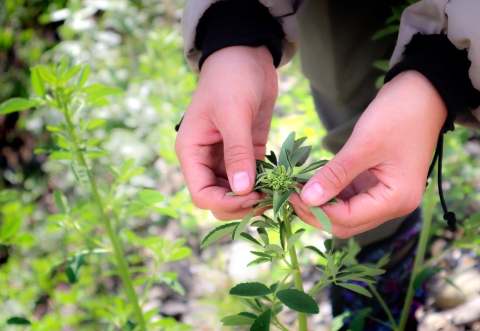Yukon Flats National Wildlife Refuge staff will be working on the river this summer (2024) conducting invasive white sweet clover surveys on gravel bars between the Yukon River bridge and upstream of Beaver, AK toward Fort Yukon, AK. White sweet clover has been documented in Circle, Fort Yukon and Stevens Village. Our focus is to search areas of the river downstream of these communities to see if white sweet clover has spread onto gravel bars.
White sweet clover, where found, can grow in dense stands possibly preventing willow and alder from establishing. Dense stands could also displace birds like sandpipers and Arctic Terns from nesting on gravel bar habitat. If found, refuge staff will document the location, and if the infestation is small, staff will pull or use a weed trimmer to remove the flowering plants. Plants will go into plastic garbage bags and be taken back to Fairbanks for proper disposal.
The U.S. Fish and Wildlife Service National Wildlife Refuge System manages invasive species invasive species
An invasive species is any plant or animal that has spread or been introduced into a new area where they are, or could, cause harm to the environment, economy, or human, animal, or plant health. Their unwelcome presence can destroy ecosystems and cost millions of dollars.
Learn more about invasive species collaboratively with public and private organizations, in and adjacent to 588 national wildlife refuges, including the Yukon Flats National Wildlife Refuge. Yukon Flats refuge staff work closely with Service programs, the Fairbanks Soil and Water Conservation District (FSWCD) and other partners to plan, survey and document terrestrial and aquatic plants that are not local to interior Alaska. Some of these nonlocal plants are considered invasive when their introduction causes or is likely to cause economic or environmental harm or harm to human health. Working to remove invasives that could harm local communities is critical work to ensure the continued wellbeing of communities within the Yukon Flats National Wildlife Refuge and across Alaska.
Our goal is to prevent and control the spread of invasive plant populations (on land and water) in refuges and private lands. The refuge and FSWCD have conducted early detection surveys on interior Alaska rivers and in Yukon Flats communities since 2010. Staff are revisiting Yukon Flats communities over the next couple of years to update the status of nonlocal and invasive plants. How can you help? You can help more than you realize! We highly value hearing from you. If you see something in your area that looks like it doesn’t belong, please let us know. Contact the refuge at 1-907-378-7195 to report it or call the Alaska Invasive Species Hotline at: 1-877-INVASIV (1-877-468-2748). #UnleashingTheScience







